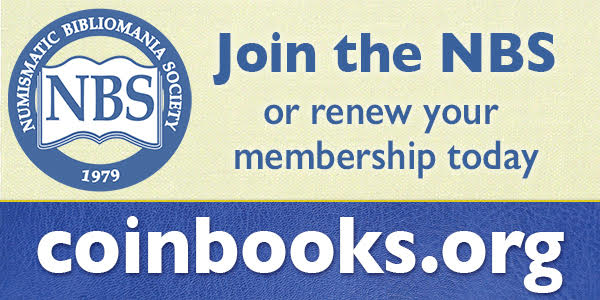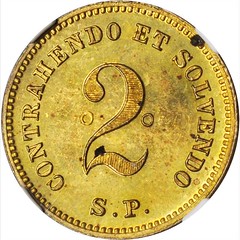
PREV ARTICLE
NEXT ARTICLE
FULL ISSUE
PREV FULL ISSUE
VOCABULARY TERM: LIMITING GUIDEDick Johnson submitted this entry from his Encyclopedia of Coin and Medal Terminology. Thanks! I added an image from the Stack's Bowers site. -Editor Limiting Guide. A design element on a medallic piece to position additional work, as the focus to drill a hole, or for piercing; to affix a foot or hanger; to apply a jewel or appliqué, or such. A few 19th century medals had tiny raised circles as limiting guides or piercing guides for drilling a hole at the 12:00 position just inside the rim. These can be found on several early U.S. Mint Indian Peace Medals, including James Madison (IP-5) and John Tyler (IP-21) Indian Peace Medals. Also a number of hand engraved medals by J.E. Eyman for the American Methodism Centenary, 1866, had limiting guides, some on both sides. Limiting guides disappear if the hole drilled is larger than the diameter of the circle. However some specimens are found intact without the hole drilled. Hence they indicate a scarce variety of the piece since most such medals were intended to be issued holed (and usually are so). The raised circle's shape is called an annulet (but "limiting guide" when intended to have some further work done).
Sometimes an incuse limiting guide was employed, as where a gemstone was to be set in. An example is the American Numismatic Association Chicago Convention Medal of 1966, where a diamond was inset. Limiting guides found on the reverse of a uniface piece generally indicate some form of mounting to be attached. Paperweight plaquettes with half ball feet frequently had limiting guides struck as raised circles where the feet were to be attached. The hemisphere fits within the raised circle, which acted as a tiny fence around the feet. In very rare instances the diesinker or medal designer would allow for spacing in the legend near the rim (without the limiting guide). An example is a Stephen A. Douglas Medal of 1866; the word monument contained space indicating where a hole is to be drilled, thusly: monu [space] ment. Reference: {1999} Rulau (Russell) Standard Catalog of United States Tokens, 1700-1900, p 321-322. Linear Circle. A raised line forming a circle as part of the design, an annulus. It can be part of the border – as one of several elements of the border design – or such a circle appearing anywhere in the design, often where it encloses a panel, or a center circle enclosing the device. When the circle is part of the border it is called the outer circlet, when it encloses a smaller center area it is called an inner circlet (or tressure if other than circular shape). Linear circles are often placed in a design where a badge center or center emblem is to be placed for a fabricated medal. Once this is added to the base medal the linear circle forms a frame for the center emblem. A small ring or circle in a design is called an ANNULET, an example of which is a limiting guide, the focus where a hole is to be drilled. A raised line that is not a circle but outlines the area for later engraving, for instance, is called a CARTOUCHE. See also border.
CLASS 02.5
Image from Stack's Bowers:
Looking for the meaning of a numismatic word, or the description of a term? Try the Newman Numismatic Portal's Numismatic Dictionary at: https://nnp.wustl.edu/library/dictionary Or if you would like a printed copy of the complete Encyclopedia, it is available. There are 1,854 terms, on 678 pages, in The Encyclopedia of Coin and Medal Technology. Even running two a week would require more than 19 years to publish them all. If you would like an advance draft of this vital reference work it may be obtained from the author for your check of $50 sent postpaid. Dick Johnson, 139 Thompson Drive, Torrington, CT 06790.

Wayne Homren, Editor The Numismatic Bibliomania Society is a non-profit organization promoting numismatic literature. See our web site at coinbooks.org. To submit items for publication in The E-Sylum, write to the Editor at this address: whomren@gmail.com To subscribe go to: https://my.binhost.com/lists/listinfo/esylum All Rights Reserved. NBS Home Page Contact the NBS webmaster 
|
